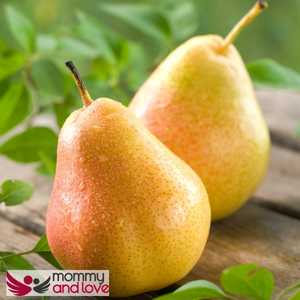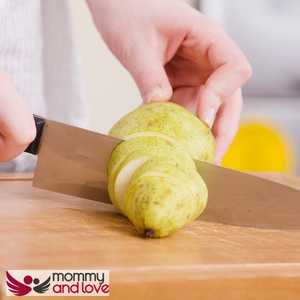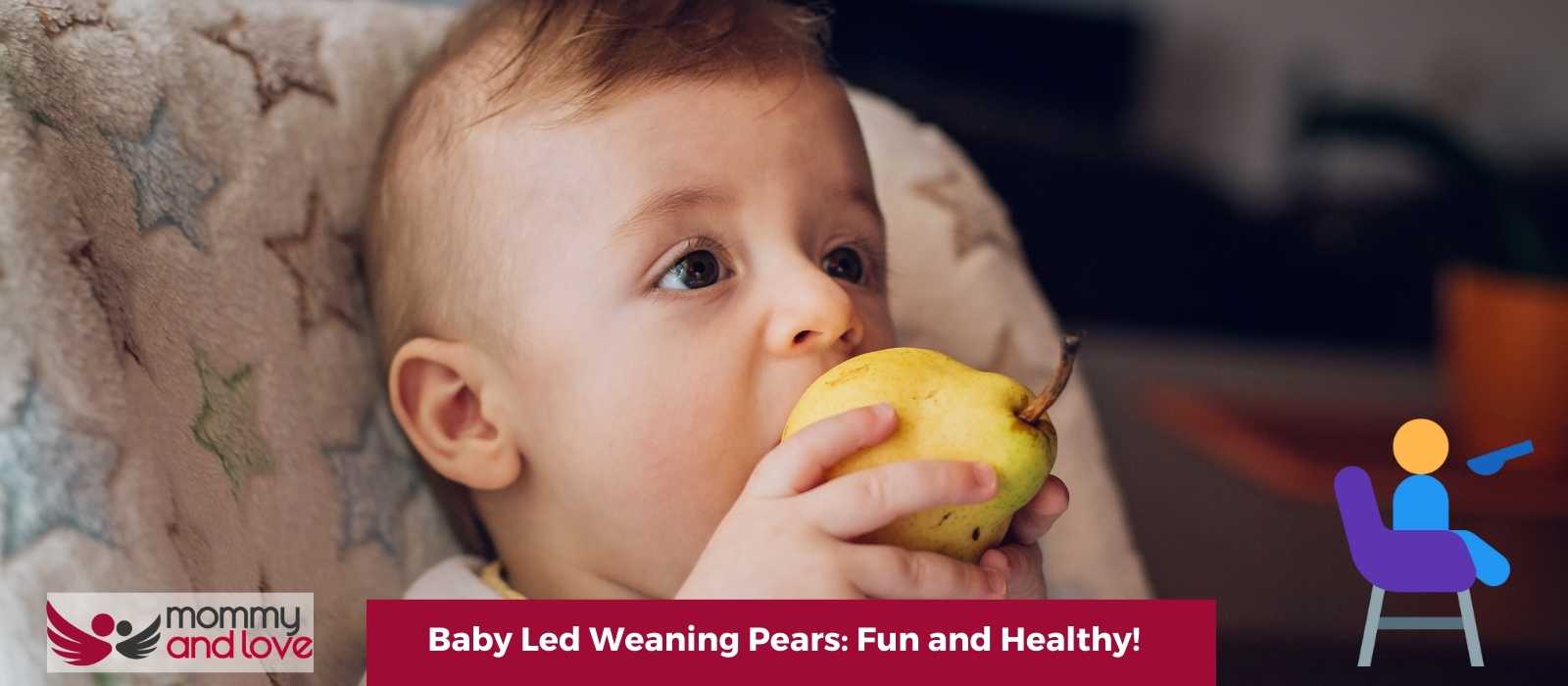Do you want to give your baby a healthy start to their eating journey? If so, baby-led weaning with pears is a great way to do it! Pears are amazing finger foods and nutritious fruits and are perfect for babies who are starting to eat solid foods. In this blog post, we will discuss the benefits of pears, as well as some tips on how to get started. Let’s get started!
Are Pears Healthy?

Pears are great for babies because they’re sweet, an excellent source of nutrition calories, don’t contain any saturated fat and contain a good balance of nutrients.
The fruit also helps babies develop their motor skills.
Firm pears are high in fiber, which helps a baby’s digestive system process food. It also contains copper which is good for iron absorption which is good for their growing bodies. A pear fruit also contains vitamin C and A, which help with the immune system, eyesight and skin. Peach slices also give infants the opportunity to practice their hand-eye coordination and motor skills.
They are one of the top 12 foods that contain the highest pesticide residue, so it is best to purchase organic peaches or at least wash them thoroughly before giving them to your child.
When Can Babies Start Eating Cooked Pear?
So, when can babies eat pears? The American Academy of Pediatrics (AAP) recommends that babies start eating solid foods around six months old. However, every child is different and some may be ready to start earlier or later than others.
How to Get Started with Baby Led Weaning and Cook Pears
If you want to introduce your baby to pears, there are a few things you need to do first. Here are a few tips:
- Don’t give your baby baked pears until they’re at least six months old. Wait until your baby is ready to start solids, and make sure they’re able to sit up unassisted and have good control of their head before giving them their first food.
- You can introduce spices by adding cinnamon to the pear can make it taste delicious. When you add cinnamon, instructions should be easy to follow.
- Peel it and use a blender or food processor to make a pear puree. Serve warm or store the pear in an airtight container for later. Cook and prep time should be between 5-10 minutes.
Now that you know a little bit more about pears, it’s time to get started! The benefits of this type of feeding are endless, and your baby is sure to enjoy these nutritious fruits. Have fun!
Are Pears Choking Hazards to Babies?
Pears can be choking hazards especially if raw or dried. If you want to introduce a pear or any other foods such as fruit or vegetable to your child, make sure the pear is super-soft, pureed, and with no lumps.
Can Babies Be Allergic to Pears?
Yes, babies can be allergic to baked pears. The most common allergy is to the pollen in the fruit. If your baby has a severe reaction such as difficulty breathing, hives, or swelling of the lips or face, they may be allergic and you should seek medical attention immediately.
How Do You Prepare Pears for Baby?

Pears are a great fruit to start with when your baby is ready for solid foods. It’s easy to hold and gum and can be cut into sticks or chunks.
Once your baby has mastered the pincer grip, they can grab pear slices right off the plate.
Ripe pears are soft enough for babies to gum, but if they’re too ripe, they’ll turn to mush in your baby’s hands (and all over their face).
To prepare for feeding:
Wash the pear, then slice it in half lengthwise and into bite-sized pieces. You can leave the soft peel on. Cut out the core and seeds on both sides of the pear. Prep time should be between 3-5 minutes.
To serve:
Cut pears in bite-sized pieces and place one stick or chunk of pear on your baby’s highchair tray or plate at a time. If you fill the plate with pieces of pear all at once, your baby might get overwhelmed trying to figure out where to start! Serve pear on top of oatmeal, unsalted butter, yogurt or cottage cheese for a nutrient-packed meal.
How to Know Ripe Pears?
You can’t tell a ripe pear by squeezing like you would with apples. The best way to check on a pear’s ripeness is to look at the stem end and see what color it is. If the stem end has turned green or yellow, the soft pear is likely ready to eat.
Takeaway
Pears are fantastic finger foods and make baby-led weaning a fun and healthy experience! When your baby is ready to start solid foods, a pear is the perfect finger food. This type of feeding can be messy so you’ll want to have some towels or wipes handy when it’s time for cleanup.
A pear can be a choking hazard if they’re raw or dried, so make sure they’re cooked soft, pureed, and with no lumps. Talk to your baby’s pediatrician if you have any questions about introducing solid foods to your baby and what foods to add for their first bite.

This article was written by Sandra Baker – full time writer and the mother of four amazing kids (including twins!)
She’s also a breastfeeding counselor and has spent years helping new parents learn how to care for their children. When she’s not writing or caring for her children, Sandra likes to spend time reading and taking walks with her husband.




